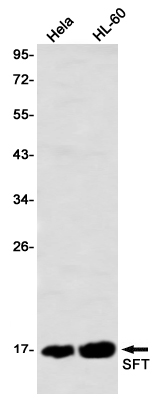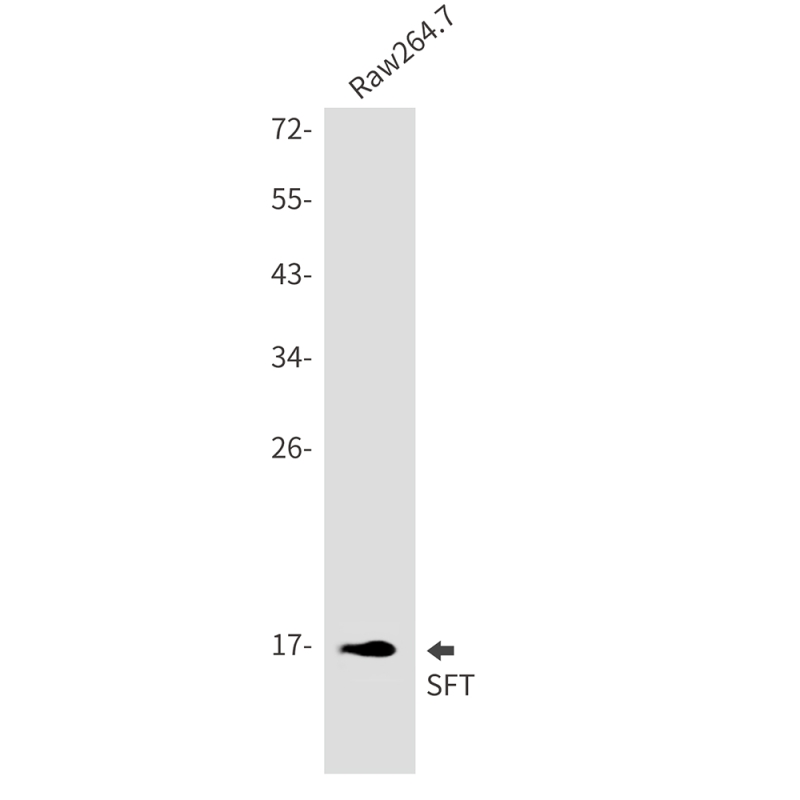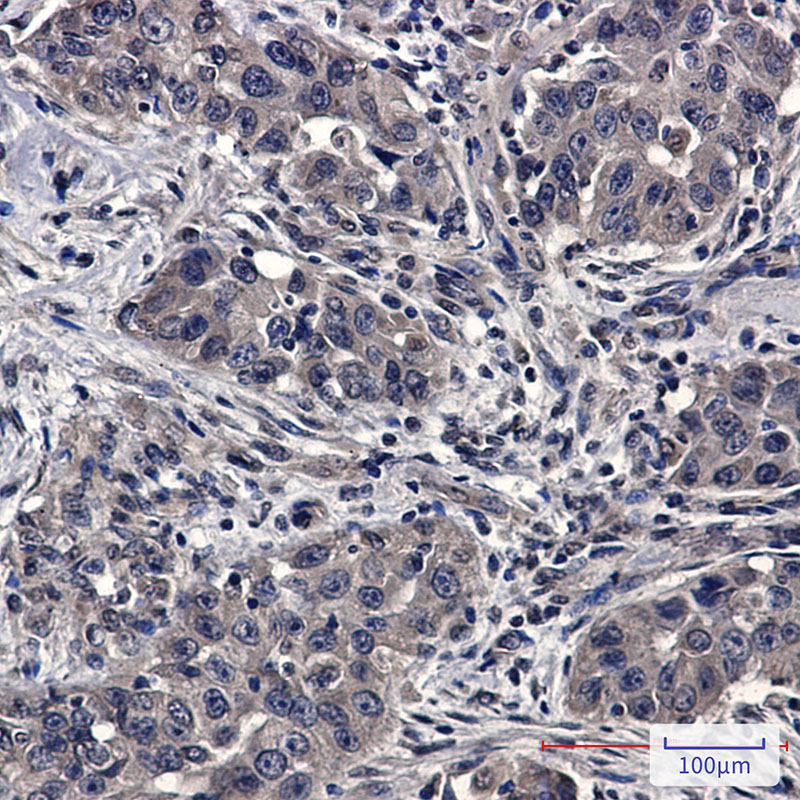


| WB | 1/500-1/1000 | Human,Mouse,Rat |
| IF | 1/20 | Human,Mouse,Rat |
| IHC | 1/50-1/100 | Human,Mouse,Rat |
| ICC | 技术咨询 | Human,Mouse,Rat |
| FCM | 咨询技术 | Human,Mouse,Rat |
| Elisa | 咨询技术 | Human,Mouse,Rat |
| Aliases | ubiquitin conjugating enzyme E2 D1; SFT; UBCH5; UBC4/5; UBCH5A; E2(17)KB1 |
| Entrez GeneID | 7321 |
| WB Predicted band size | Calculated MW: 17 kDa; Observed MW: 17 kDa |
| Host/Isotype | Rabbit IgG |
| Antibody Type | Primary antibody |
| Storage | Store at 4°C short term. Aliquot and store at -20°C long term. Avoid freeze/thaw cycles. |
| Species Reactivity | Human,Mouse |
| Immunogen | A synthetic peptide of human SFT |
| Formulation | Purified antibody in TBS with 0.05% sodium azide,0.05%BSA and 50% glycerol. |
+ +
以下是关于SFT抗体的3篇参考文献示例,涵盖诊断标志物及分子机制研究:
---
1. **文献名称**:*Nuclear expression of STAT6 distinguishes solitary fibrous tumor from histologic mimics*
**作者**:Doyle LA, et al.
**摘要**:该研究证实STAT6的核表达是孤立性纤维瘤(SFT)的高度敏感和特异性标志物,可用于与形态学相似肿瘤(如纤维肉瘤和滑膜肉瘤)的鉴别诊断,优于传统标志物CD34.
2. **文献名称**:*STAT6 is amplified in solitary fibrous tumors and represents a therapeutic target*
**作者**:Chmielecki J, et al.
**摘要**:通过基因组分析发现,SFT中STAT6基因的扩增与肿瘤发生相关,并提示靶向STAT6通路可能成为潜在治疗策略,尤其对难治性/转移性SFT患者。
3. **文献名称**:*The NAB2-STAT6 fusion gene regulates oncogenic signaling in solitary fibrous tumor*
**作者**:Robinson DR, et al.
**摘要**:研究揭示了NAB2-STAT6基因融合在SFT中的核心作用,该融合导致STAT6信号通路持续激活,驱动细胞增殖,为开发靶向疗法(如STAT6抑制剂)提供理论基础。
---
这些文献聚焦于STAT6在SFT诊断及分子机制中的关键作用,涵盖临床病理鉴别和分子靶向治疗方向。如需具体期刊或年份信息,可进一步补充关键词检索。
SFT antibodies, often associated with sclerosing fibromas or sclerosing fibrous tumors, are specialized immunoglobulins developed to target specific antigens expressed in fibrotic or sclerotic tissue lesions. These antibodies have gained attention in diagnostic and research settings due to their potential role in identifying and characterizing rare benign tumors, such as sclerosing fibromas of the skin, or other fibroproliferative disorders. Sclerosing fibromas are typically characterized by dense collagen deposition, spindle-shaped fibroblasts, and a paucicellular stroma, and SFT antibodies may help distinguish these lesions from morphologically similar conditions like dermatofibromas or desmoplastic melanomas.
The development of SFT antibodies often involves isolating tumor-specific markers, such as unique extracellular matrix proteins or fibroblast activation molecules, to generate monoclonal or polyclonal antibodies. These tools enable immunohistochemical staining, facilitating precise pathological diagnosis. Recent studies also explore their therapeutic potential, particularly in modulating fibrotic pathways or targeting stromal components in tumor microenvironments. However, challenges remain in ensuring specificity, as cross-reactivity with normal fibrous tissues or other fibrotic diseases can occur. Ongoing research aims to refine antibody design and expand applications in both diagnostics and targeted therapies for fibro-sclerotic disorders.
×